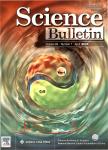Determination of the controlled landing trajectory of Chang’E-1 satellite and the coordinate analysis of the landing point on the Moon
Determination of the controlled landing trajectory of Chang’E-1 satellite and the coordinate analysis of the landing point on the Moon作者机构:Shanghai Astronomical Observatory Chinese Academy of Sciences Shanghai 200030 China
出 版 物:《Chinese Science Bulletin》 (Chinese Science Bulletin)
年 卷 期:2010年第55卷第13期
页 面:1240-1245页
核心收录:
学科分类:07[理学] 070401[理学-天体物理] 0704[理学-天文学]
基 金:supported by the National Natural Science Foundation of China (Grant Nos. 10778635 and 10973030) China’s Lunar Exploration Project (CE-1) National High-Tech Research and Development Program of China (Grant Nos. 2008AA12A209 and 2008AA12A210) STC of Shanghai Munici-pality (Grant No. 06DZ22101)
摘 要:Based on the tracking observations of radio ranges and VLBI delays of Chang’E-1 (CE-1) satellite during the controlled landing on the Moon on March 1, 2009, the landing trajectory and the coordinates of the landing point are determined by positioning analysis. It is shown that the landing epoch (the emission epoch of the last signal) of CE-1 satellite on the Moon was at UTC8h13m6.51s. The lunar longitude, latitude and surface height of the landing point in the lunar primary axes frame are respectively 52.2732°, 1.6440° and –3.56 km (the reference lunar radius is 1738 km). The uncertainties are 0.0040°, 0.0168° and 0.18 km. The corresponding uncertainty in the tangential direction of the lunar surface is 0.52 km and the three-dimensional (3D) positioning uncertainty is 0.55 km. It is accordingly deduced that even with the present technical specifications of the radio ranges and VLBI delays, the 1 km 3D positioning precision could be guaranteed for the lander in the second stage of China’s Lunar Explora- tion Project. Concerning the trace determination of the rover on the lunar surface, because only telemetry signal will be emitted, VLBI would be the sole tracking technique from the Earth. The application of the constraint of geocentric distance is shown to be helpful to improving the positioning precision. It is worthy to pay close attention to the applications of the same beam VLBI technique, the lunar topographic model and the on-board observations of the lander and rover to the position/trace determination of the rover.



